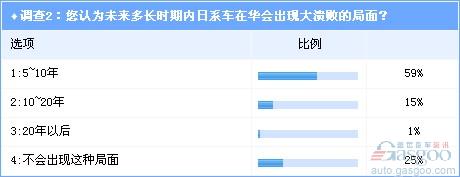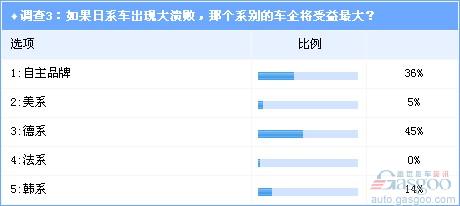Mixed Refrigerant, Dual Mixed Refrigerant, Single Mixed Refrigerant, Mixed Refrigerant Gas, Blend Refrigerant QuZhou Bingcool Refrigerant Manufacture Co.,LTD , http://www.refrigerant-supplier.com
In the 1980s and 1990s, there has been an upsurge of Japanese companies’ direct investment in China. In the color TV industry and other industries, Japanese brands have basically occupied a monopoly position. However, as the market matures, the rise of Chinese domestic companies and the fast-tracking of European and American predators quickly follow suit. Because Japanese brands cannot formulate corresponding localization strategies based on changes in the Chinese market, they can only lose their dominant position in the Chinese market. So, as a Japanese car that is currently performing well in the Chinese auto market, will it eventually end up with losses in the Chinese market due to an overly conservative localization policy?
In response, Gasgoo.com launched a week-long industry survey (on November 9-15, November 9) around the topic of “Japanese cars will suffer a major defeat in China.†A total of 2,632 people participated in the industry during the period. Voted. According to the poll results of Survey 2 (see Figure 1), only 25% of people believe that the Japanese car's failure in the Chinese market will not happen. In the camp of Japanese cars that are pessimistic about China’s development, those who occupy 59% of the total number of voters tend to believe that in the next 5 to 10 years, Japanese cars will suffer a big defeat in the Chinese market, and another 15% People speculate that this drastic change takes about 10 to 20 years. This group of data shows that for the future of Japanese cars in the Chinese market, the industry is generally not optimistic. 
figure 1
For the industry’s collective pointing to the fact that Japanese cars will experience a major defeat in the Chinese market, we may see some clues from the poll results of Survey 1 (see Figure 2). 
figure 2
In survey 1, 44% of the people will cause the Japanese car's competitiveness in the Chinese market to decline, pointing to the Sino-Japanese friction. In an offline survey interview conducted by Gasgoo Motors, the experts have slightly different opinions on this. Some experts believe that due to historical reasons, the rejection of Japanese cars and even hostile emotions persists. There has been some political risk for Japanese automakers to conduct business in China. However, experts further elaborated that the reason that the Japanese automakers are in a disadvantageous position in the competition in the future is actually not large, and the conservative policy of localization operations may be fatal. From the online survey of Survey 1, we can also see that the proportion of “not fully localized†voting is as high as 32%.
A number of experts said that during the lead-in period when large consumer goods are in the market (ie, mainstream users are still buying for the first time), market capacity will continue to climb, and competitors in the market will not be in a zero-sum competitive state. Therefore, this period is basically “product competitionâ€. “The main stage is which company has better products, especially products with leading quality and technology. Which company will have better market performance, regardless of whether these products are specifically targeted at consumers in the Chinese market? Demand features developed. Usually during this period, international brands are often at an advantage.
Once the market enters the mature period of competition, that is, when consumers begin to purchase multiple times and the market capacity is relatively stable, the competitors in the market turn to zero and the competition state, which also enters the “operating localization†competition stage. The automotive industry and the home appliance industry, which are not as fast in product innovation and production process innovation, are similar in that they need to focus their competition on the rapid response to the localization market demand. This is exactly what Japanese automakers are Short board.
The low degree of localized operation of Japanese multinational companies in China is mainly reflected in four aspects: First, the product design mechanism for the domestic market, that is, after researching and studying the rapidly changing and continuously diversified needs of China, it is specially designed, developed, and quickly introduced with new demands. Adapted products, rather than taking Chinese-styled improvements for products developed in Japan; Second, increasing the proportion of localized procurement (parts and accessories); Third, localization of research and development, that is, establishing R&D institutions in China and understanding the Chinese market The personnel led product development decision-making and implementation; Fourth, management localization, so that the Chinese who manage the Chinese market more experienced into the management and occupy a relatively large proportion. Judging from the current situation, Japanese automakers are just like Japanese companies in other industries. The localization process is constrained by Japanese corporate culture, and the outlook is not promising. This is also the key reason why people in the industry are not optimistic about the Japanese OEMs in the next phase.
Of course, Japanese car companies do not have a one-size-fits-all style. For example, Nissan has made its corporate culture style closer to European companies due to its alliance with Renault. Therefore, Nissan’s market performance with other Japanese companies may also be different.
In Survey 3 (see Figure 3), we have given an assumption that if the future of the Japanese car in the Chinese market collapses, who will be the biggest beneficiary? According to the results of the polls, the opportunities for the German cars and their own brands were favored by the industry, with 45% and 36% of the votes cast. 
image 3
We believe that if Japanese cars occupying nearly 20% of China’s market share are torn down, other models will undoubtedly be the beneficiaries. However, as a mature and healthy automobile market, it is more necessary to participate in all vehicle models (including Japanese models) and to fully compete in the market. Therefore, we also hope that Japanese automakers can plan ahead and adjust their strategies in China in a timely manner, vigorously promote localization operations, and more scientifically locate products and set prices in order to prevent problems.
While the auto market in China is advancing rapidly, Toyota has experienced a decline in sales. At the same time, Toyota's performance in North America, especially in Canada, is not satisfactory. If the performance of Toyota’s recent under-sales is interpreted as a continuation of the market response after the financial crisis and Toyota’s recall of the crisis, then Japanese cars represented by Toyota are gradually entering the mature competition stage of the Chinese market. Due to its low localization and conservative policies, it may incur a real defeat and repeat the previous failure of Japanese household appliance brands in the Chinese market. This is the serious challenge Japanese auto companies will face. This is also Gasgoo.com. The latest issue of the industry survey. The voting results showed that more than 70% of industry insiders believe that the Japanese car's defeat in the Chinese market is only a matter of time, and 59% of them are inclined to think that the Japanese car's prediction of a big rout in the Chinese market in the next 5 to 10 years will become reality.